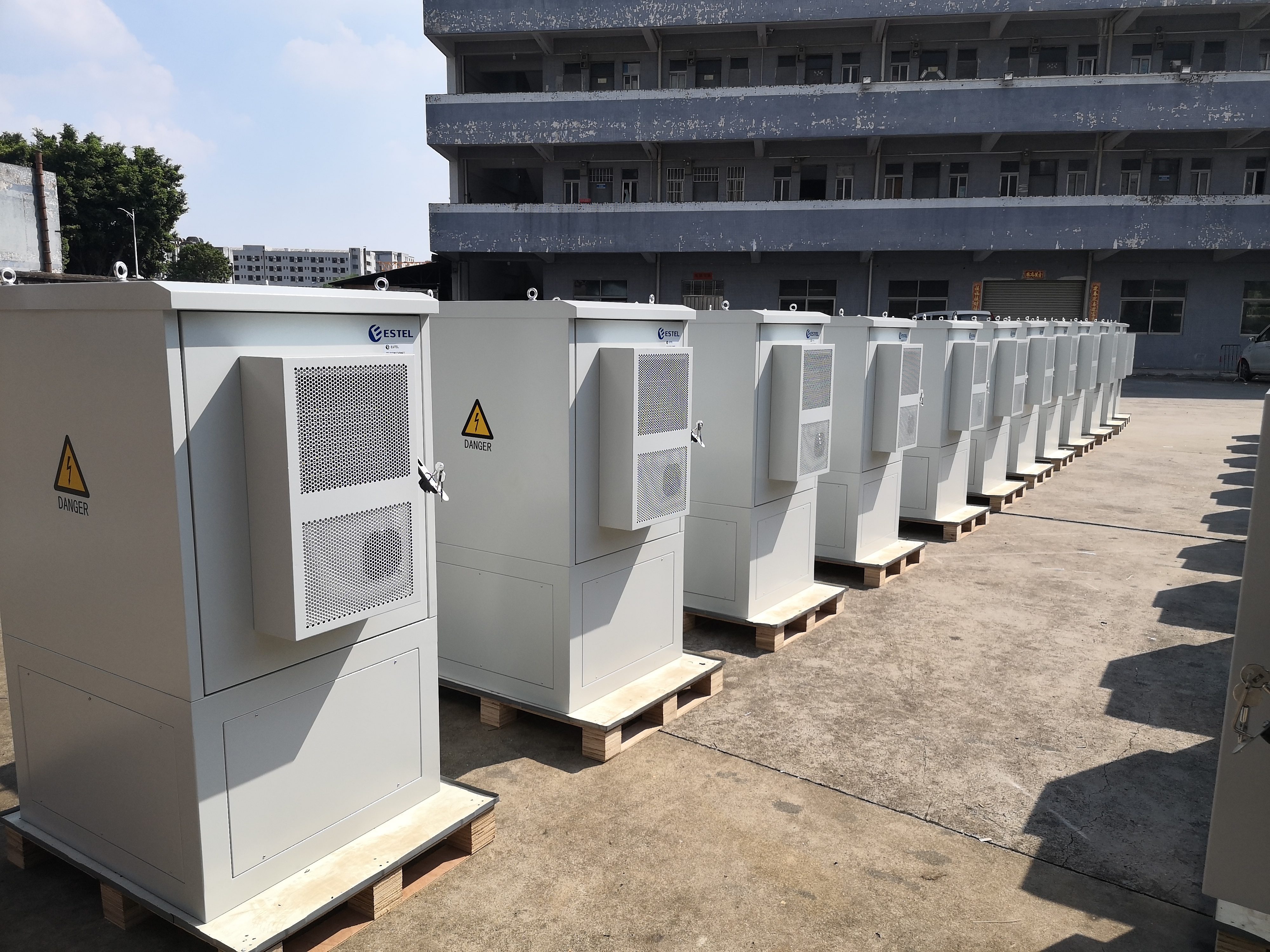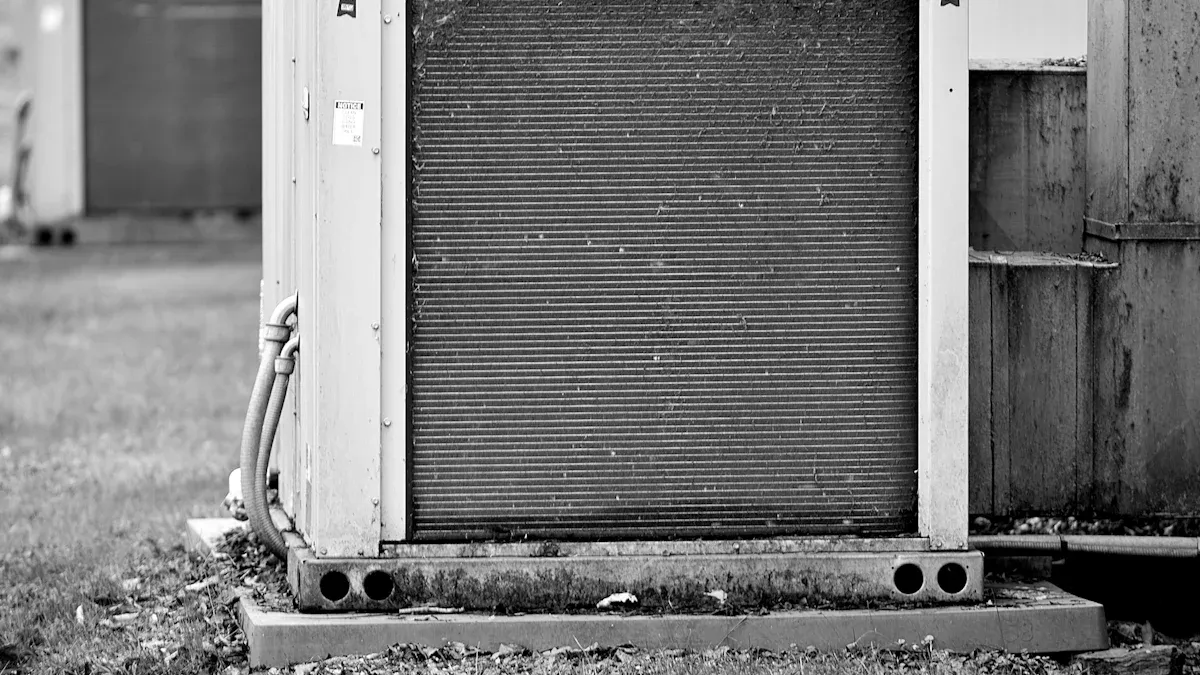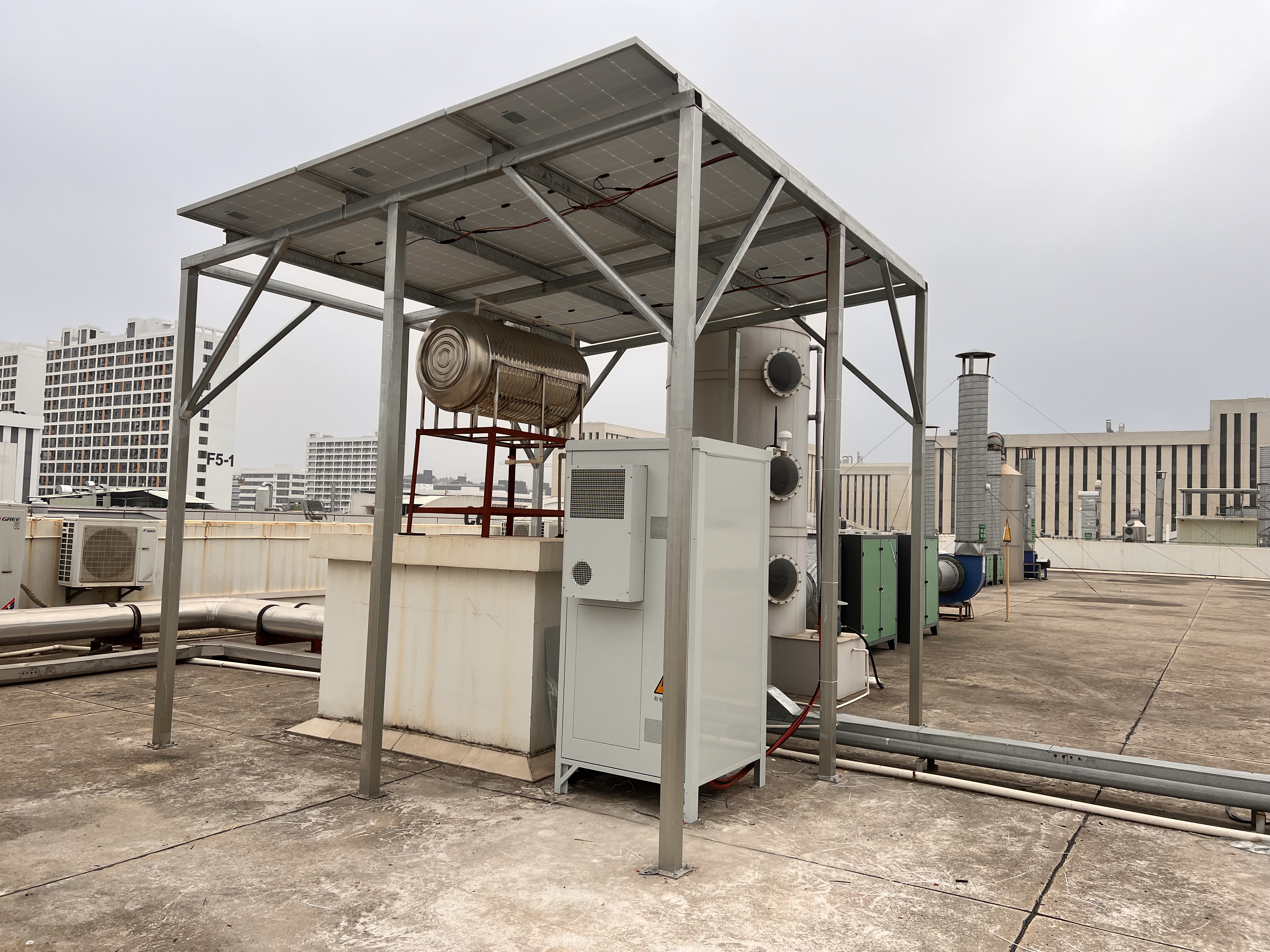Why Outdoor Cabinet Heat Exchangers Are Critical for Sensitive Electronics

You need outdoor cabinet heat exchanger systems to keep sensitive equipment safe from tough weather. Overheating, moisture, dust, and other things can quickly hurt important parts inside your electronic devices. Enclosure cooling gives important protection by keeping temperatures steady and stopping outside air from getting in.
Without good enclosure cooling or protection, outdoor cabinets often break, which causes expensive downtime and less trust in the equipment. Outdoor cabinet heat exchanger units give both cooling and heating, so your sensitive equipment stays safe all year.
Key Takeaways
Outdoor cabinet heat exchangers help keep electronics safe. They protect from hot and cold, water, dust, and dirt. This stops damage and saves money by avoiding repairs.
Sealed air loop designs block dust, water, and chemicals. This helps equipment last longer and need less fixing.
These systems can heat and cool to keep temperatures steady. They stop water drops and overheating in any weather.
Picking the right cooling system depends on the cabinet’s material and where it is. It also depends on how much heat it makes and how often you can fix it. This helps the system work well and last longer.
Cleaning filters every few months is important. Regular care helps heat exchangers work better and keeps electronics safe for more time.
Outdoor Environment Risks

Temperature Extremes
Sensitive electronics in outdoor telecom cabinets can face big problems. Very hot or cold weather can make equipment stop working. Sometimes, outdoor cabinets get as hot as 50 °C. Most electronics work best between 20 °C and 30 °C. If it gets hotter than 85 °C inside, parts can break forever. Climate control is needed to keep the temperature steady. This helps stop cracking, breaking, and rust. The table below shows how temperature changes affect your equipment:
Measurement Aspect | Value | Impact |
|---|---|---|
Ambient temperature extremes | Overheating risk | |
Optimal operating temperature range | 20 °C to 30 °C | Best for battery stability |
Max allowable junction temperature | Below 85 °C | Safe operation for electronics |
Cooling device heat dissipation limit | 763 W | Maintains safe temperatures |
Climate control and cooling are needed to keep outdoor telecom cabinets safe from very hot or cold weather.
Moisture and Humidity
Moisture and humidity can hurt outdoor telecom cabinets every day. Water can get inside as vapor or liquid. This can cause rust and short circuits. High humidity, like 95% at 40°C to 65°C, makes damage happen faster. Controlling moisture is important for safety. If you do not control humidity, you might pay a lot for repairs and lose time. Cabinets with climate control help stop these problems. They keep electronics dry and safe, meet safety rules, and lower the chance of failure.
Note: Good climate control in outdoor telecom cabinets stops moisture from building up. This keeps your equipment safe from expensive damage.
Dust and Contaminants
Outdoor telecom cabinets need to be kept safe from dust and dirt. Dust comes from things like soil, pollen, and building work. It can pile up on filters and heat sinks. This blocks air and makes things hotter. Without good airflow, equipment can get too hot and break. Pollutants like acids can also cause rust. You need to protect your electronics from these dangers. Here are some important things to remember:
Dust blocks air and makes heat build up in outdoor telecom cabinets.
Pollutants can cause rust on circuit boards in just a few months.
Air filters and cleaning help keep dust and dirt away.
HEPA filters and anti-static tools help keep air moving and control the climate.
Modular cabinet designs let you add more protection as your network grows.
Using eco-friendly materials and energy-saving climate control helps the environment.
Outdoor telecom cabinets with strong airflow and climate control give the best protection from dust, dirt, and other harmful things.
Outdoor Cabinet Heat Exchanger Function

Sealed Air Loop
A sealed air loop helps keep your electronics safe from outdoor dangers. This setup stops outside air, dust, and water from getting inside the cabinet. Closed loop cooling systems, like air-to-air heat exchangers, move heat out but do not let in dirt or water. This keeps your equipment safe from harmful chemicals, vapors, and even animals. Stainless steel and coated parts help stop rust. Filters and rodent-proof parts give extra safety.
Sealed enclosures block dust, water, and chemicals from touching electronics.
Closed loop cooling moves heat out without letting in outside air.
Heat pipe technology takes heat away and keeps things steady inside.
Enclosure air conditioners and heaters keep the right temperature and stop water drops from forming.
The sealed design means less fixing and more time working for your equipment.
Tip: Pick a sealed air loop for your outdoor cabinet heat exchanger. This helps your equipment last longer and stay safe from rust.
Enclosure Cooling
Enclosure cooling is very important for keeping outdoor cabinets at the right temperature. You need to keep the inside temperature steady so your equipment does not break. Outdoor cabinet heat exchangers use different ways to control heat. Air-to-air heat exchangers with heat pipes move heat from inside to outside using fans and phase change. Double-sided impingement cooling blows hot air and cool air onto a fin core to move heat through the wall. Liquid-to-air and liquid-to-liquid heat exchangers use cold plates and fins to take away heat, even if it is hot outside.
Fans help lower inside temperatures and use less power than air conditioning.
Small heat pipe exchangers fit in tight spaces and cool well.
Cross-flow and counter-flow both work, but cross-flow can be better in some setups.
Studies show that good airflow and cooling placement stop hot spots and help performance.
Metric / Parameter | Description |
|---|---|
Air temperatures | Measured at supply, breathing zone, and exhaust to check cooling impact |
Airflow rates | Controlled and measured to ensure proper ventilation and cooling |
Energy performance indices | Include Heat Removal Efficiency, EER, and COP for cooling system efficiency |
PUEcooling Value | Rack-based air cooling: 1.28 (better than room-based: 1.33) |
Enclosure cooling keeps electronics at safe temperatures. This stops heat problems, which cause about 30% of equipment failures. Picking the right cooling system and managing airflow helps your equipment last longer and work well outside.
Heating and Cooling
Outdoor cabinet heat exchangers give both heating and cooling. This keeps your electronics safe in any weather. You need both to control the climate inside. In cold weather, heaters stop water drops by keeping the inside warm. In hot weather, cooling systems take away extra heat and keep things safe.
Case Study / Technology | Description | Outcome / Impact |
|---|---|---|
Urban Heat Islands | Variable-speed drives and energy recovery units adapt to heat-absorbing surfaces | 20% energy reduction; comfort maintained |
Coastal and Humid Areas | Outdoor HVAC with evaporative cooling and hot gas reheat for humidity control | Lower costs; stable comfort |
Adaptive Control Systems | Smart sensors adjust heating and cooling in real time | Immediate response; energy savings |
District Cooling System | Integrated demand response and thermal inertia for peak shaving | 12.1% peak load reduction; 8.57% cost savings |
You get smart temperature control systems with sensors and adaptive controls. These systems watch temperature, humidity, and airflow. They make changes right away to save energy and keep things running well. With both heating and cooling, your outdoor cabinet heat exchanger stops water drops, saves energy, and keeps working even in tough weather.
Note: Using both heating and cooling keeps your electronics safe, even when the weather is very harsh.
Protection and Benefits
Equipment Reliability
You want your electronics to work every day, even in bad weather. Outdoor cabinet heat exchangers help protect against heat, dust, and water. Enclosure cooling keeps the air inside clean and steady. This stops sudden changes that can hurt your equipment. Good climate control helps prevent overheating and water problems. Your equipment stays safe in a controlled space, so it works better and lasts longer.
Tip: Using reliable cooling and climate control saves money on repairs and keeps your network working well.
Extended Lifespan
Protecting electronics from tough weather helps them last longer. Enclosure cooling keeps the temperature steady and blocks dust and water. This lowers stress on parts and stops rust. Your equipment works longer before you need to replace it.
Here is how different cooling methods change how long your equipment lasts:
Cooling Method | Advantages | Disadvantages | Best Application Scenario |
|---|---|---|---|
Heat Exchangers | Closed loop keeps internal air clean; low maintenance | Dependent on ambient air temperature | Moderate heat loads, dusty environments |
Liquid Cooling | Very high cooling capacity, effective heat removal | Complex system, higher initial cost | Extremely high heat loads, specialized applications |
Air Conditioners | Cools below ambient temperature, dehumidifies | Higher cost and maintenance | High heat loads, hot/humid, and dirty environments |
The right climate control stops heat damage and wear. This makes your equipment last longer and saves money over time.
Reduced Downtime
Downtime costs a lot when your network or devices stop working. You want outdoor cabinets to keep running. Studies show heat exchange systems keep things cool and lower failure risk. These systems stop thermal stress, so equipment breaks less often.
Enclosure cooling means fewer emergency repairs and smoother operations. You do not have to fix things in bad weather as much. Here are ways climate control helps lower downtime:
Keeps the cabinet dry and cool inside
Stops dust and dirt from causing trouble
Holds steady temperatures for electronics
Lowers the chance of sudden breakdowns
You get more reliable equipment and spend less time fixing things. Your network or service stays up for your customers.
Compliance
You must follow strict rules when installing outdoor cabinets. NEMA sets standards to make sure cabinets handle rain, snow, dust, and salt air. Using the right heat exchange system shows you meet these rules.
Heat Exchange System Type | How It Works | When to Use |
|---|---|---|
Air-to-Air Heat Exchangers | Transfer heat from inside enclosure to cooler outside air without refrigerants, avoiding dust and contaminants. | Suitable for moderate outdoor temperatures and clean environments where water-based cooling is undesirable. |
Air-to-Water Heat Exchangers | Use water as a cooling medium to absorb and transfer heat more efficiently than air. | Ideal for high heat loads or very hot ambient conditions, often integrated where water cooling infrastructure exists. |
Active Cooling Systems | Employ mechanical components like compressors, fans, and pumps to circulate cool air or water, maintaining precise temperature control. | Best for environments requiring narrow temperature ranges and high cooling efficiency, such as data centers and telecom equipment enclosures. |
Outdoor cabinets with IP55 or NEMA ratings give strong protection. They keep equipment safe from rain, dust, and sun. Good climate control also stops water drops and rust, which can cause failures. Meeting these standards helps your electronics last longer and work well in important places like 5G and smart city systems.
Choosing Enclosure Cooling Systems
Assessing Outdoor Cabinets
You should think about a few things before picking enclosure cooling systems for outdoor cabinets. First, check what the cabinet is made of. Metals like stainless steel and aluminum are good because they do not rust and can reflect heat. Insulation, like foam or glass wool, helps keep the inside cool. Think about where your outdoor telecom cabinets are placed. Cabinets in the sun or near busy roads get more heat and dust. You also need to pick the right cooling system for your needs. Air cooling works well in cooler places. Water or refrigerant-based systems are better for hotter areas. Always use a safety factor when you figure out heat loads. This helps your cooling system handle sudden weather changes or more equipment use.
Cabinet material and insulation
Location and how much sun or dust there is
Type of cooling system you need
Safety factor for extra heat
Tip: Use thermal performance numbers like Return Cooling Index (RCI) to see how well your enclosure cooling systems work.
Sizing and Heat Load
You have to make sure your enclosure cooling systems are the right size for outdoor telecom cabinets. First, add up all the heat made by the equipment inside. This is called the internal heat load. Next, think about heat from the sun and air outside. Use the cabinet’s surface area and insulation to guess this outside heat load. Add both heat loads together, then multiply by a safety factor, usually 1.2, to make sure your cooling system can handle extra heat. Outdoor cabinets often need cooling systems rated for NEMA 4 or 4X to keep out rain and dust. Most outdoor telecom cabinets should stay between 80 and 104°F. Pick cooling systems like fans, thermoelectric units, or refrigerant-based systems based on your total heat load and the weather.
Measure heat from equipment inside.
Guess outside heat from the sun and air.
Add both and use a safety factor.
Choose a cooling system that fits your needs.
Maintenance Needs
You want your enclosure cooling systems to last and work well in outdoor telecom cabinets. Air conditioners cool well and keep out dust and water, but you need to check filters, coils, and refrigerant often. Fans use less energy and are easy to clean, but they do not protect as well in tough weather. Outdoor cabinets in dusty or wet places need more cleaning and care. A good maintenance plan stops sudden problems and keeps your cooling system working. Remember, if the temperature goes up by 10°C, your equipment might only last half as long. Taking care of your outdoor telecom cabinets helps them stay safe and work longer.
Performance Aspect | Air Conditioner (Outdoor Cabinet) | Cabinet Fan |
|---|---|---|
Cooling Precision | High | Moderate |
Protection | Sealed, blocks dust/moisture | Lets in outside air |
Maintenance | Needs regular checks | Easy to clean |
Best Use | Tough, dusty, wet places | Mild, clean places |
Note: Pick enclosure cooling systems that match your outdoor cabinets’ needs for the best results and fewer problems.
Outdoor cabinet heat exchangers help keep your electronics safe from heat, dust, and water. They make your equipment work well, cost less, and stay safe. Many businesses use these systems because they work in tough places and do not need much fixing.
You spend less money because they use less energy and only run when needed
The closed-loop design stops bad things like dust and water from getting inside
Simple parts mean your equipment breaks less and is easier to fix
Look at your outdoor cabinets often. Ask an expert to help you pick the best cooling system for what you need.
FAQ
What is an outdoor cabinet heat exchanger?
An outdoor cabinet heat exchanger takes heat from inside the cabinet and moves it outside. This helps keep your electronics cool and safe. The sealed loop keeps out dust and water.
How do I know if my cabinet needs a heat exchanger?
Check if your cabinet feels hot or if you see water inside. If your electronics get too hot or stop working, you need a heat exchanger. Cabinets in sunny or dusty places need more cooling.
Can a heat exchanger work in cold weather?
Yes! Many outdoor cabinet heat exchangers can heat and cool. They protect your electronics from freezing and water drops. Some have smart sensors that change the temperature by themselves.
How often should I maintain my heat exchanger?
Look at your heat exchanger every three to six months. Clean the filters and check for anything blocking air. Doing this often helps your system last longer and keeps your electronics safe.
What are the main benefits of using a sealed air loop?
You keep dust, water, and chemicals out of your cabinet.
You lower the chance of rust and short circuits.
Your electronics last longer and work better.
See Also
The Importance Of Cooling For Outdoor Communication Cabinets
Benefits Of ESTEL Cooling Systems In Industrial Cabinets
Best Weatherproof Outdoor Enclosures For Extreme Environments
Steps To Maintain Ideal Temperatures In Outdoor Telecom Cabinets
Reliable Outdoor Cabinets Providing Efficient Cooling And Control
CALL US DIRECTLY
86-13752765943
3A-8, SHUIWAN 1979 SQUARE (PHASE II), NO.111, TAIZI ROAD,SHUIWAN COMMUNITY, ZHAOSHANG STREET, NANSHAN DISTRICT, SHENZHEN, GUANGDONG, CHINA

